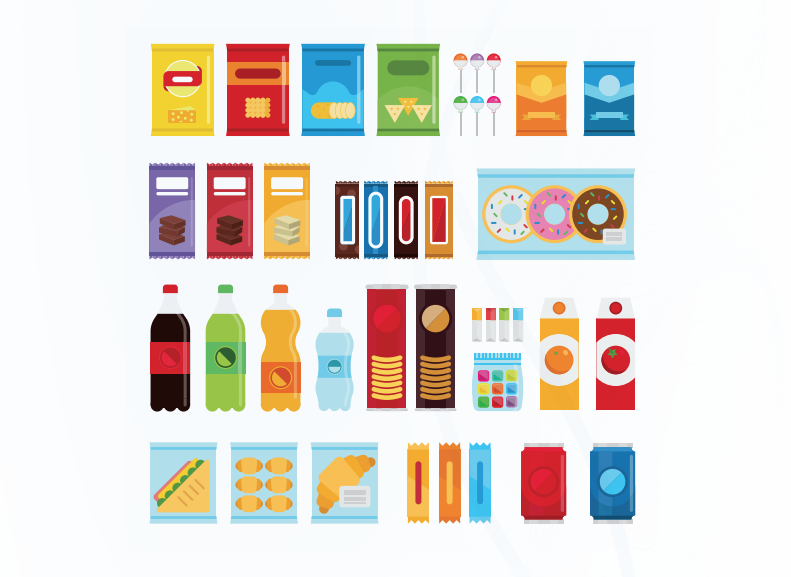A study commissioned by the Heart & Stroke Foundation of Canada reveals that nearly half of our daily calories come from ultra-processed foods.
The NOVA food classification system: from fresh food to ultra-processed food
Today, many researchers use the NOVA food classification system to study issues related to the consumption of processed foods. The NOVA system was first used to develop new Brazilian dietary guidelines, and has been endorsed by the Food and Agriculture Organization and the Pan American Health Organization. It classes foods and drinks into four groups according to the extent of food processing:
- Unprocessed or minimally processed foods: vegetables, fruits, legumes, herbs, meat and poultry, pasteurized milk, plain yogurt, eggs, rice, corn, flour, pasta, tea, coffee and water.
- Processed culinary ingredients: salt, sugar, molasses, honey, vegetable oils, butter, lard, etc.
- Foods processed by cooking or preservation: cheese, bread, legumes, preserved fruits and vegetables, salted and sweetened nuts, smoked meat and fish.
- Ultra-processed foods: sugary drinks, sweets, cookies, cakes, salty and sweet snacks, margarine, sauces, reconstituted meat, burgers, pizza, etc. These foods are formulations of industrial ingredients and other substances extracted or derived from foods, plus additives, which imitate the sensory qualities of fresh food.
The study highlights the negative impact of ultra-processed foods. Although attractive, they are nutritionally poor choices: high in salt, sugar and fat, and low in protein, fibre, minerals and vitamins. People like them because they have a long shelf life, and are convenient, ready to eat, inexpensive and tasty. They’re also influenced by food marketing, which often targets children.
Overview of ultra-processed food consumption in Canada
Dr. Moubarac used the NOVA system and 2015 data from the Canadian Community Health Survey (Statistics Canada 2015) to create an overview of Canadians’ dietary patterns:
- Overall, daily caloric intake from ultra-processed foods has increased to 48.3% compared to 39.2% from unprocessed or minimally processed foods.
- Numbers have changed little since 2004, but Canadians eat more sweetened breakfast cereals, sweetened milk-based products, reconstituted meats and ready-to-eat foods. Other data indicates that caloric intake from ultra-processed food has more than doubled in 70 years.
- Ultra-processed food consumption is high amongst all Canadians, regardless of socio-economic group.
- Young people consume the most. Children aged 9 to 13 get 57.2% of their dietary energy from ultra-processed foods and teenagers aged 14 to 18 get 54.7%. This is a worrying fact.
- Inter-individual variability is large. Some Canadians eat these products in moderation, while others rely on them as a primary source of food.
- Culture plays a role. Canadians born in Canada eat more ultra-processed foods (51.6% of their daily energy intake) than newcomers (37.8%).
Tips for cooking and eating healthy
Ultra-processed food and drinks have a low nutritional quality. So, the more we eat, the poorer the overall quality of our diet. And when our calories come mostly from these kinds of products, we eat less fresh (fruit and vegetable), minimally processed, nutritious food.
 Dr. Moubarac makes the following recommendations for Canadians to improve the quality of their diets:
Dr. Moubarac makes the following recommendations for Canadians to improve the quality of their diets:
- Choose fresh, minimally processed foods and cook simple meals at home.
- Shop in stores offering a variety of fresh products, opt for restaurants serving freshly prepared food and avoid buying ultra-processed foods.
- Take the time to plan meals and prepare food. Enjoy mealtimes as a family or in good company in pleasant environments. These activities play a central role in family and social life.
- Learn about food and develop cooking skills, be wary of marketing and, above all, protect children from advertising.
